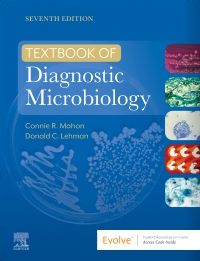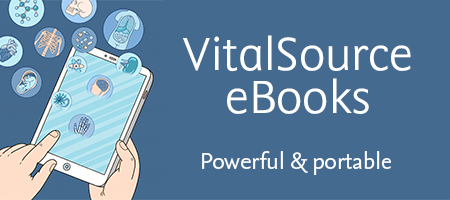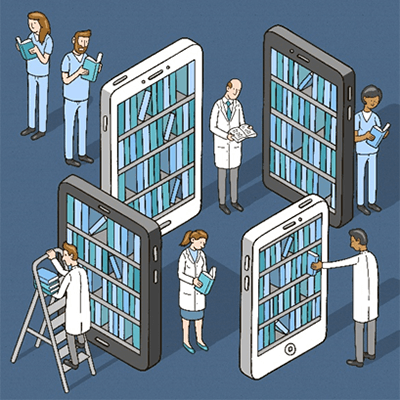Textbook of Diagnostic Microbiology, 7th Edition
**Selected for Doody’s Core Titles® 2024 in Laboratory Technology**
Gain the knowledge and skills you need to succeed in the clinical lab! Textbook of Diagnostic Microbiology, 7th Edition uses a reader-friendly "building-block" approach to help you learn the essentials of diagnostic microbiology. Featuring full-color drawings and photos, this text helps you learn to develop the critical thinking and problem-solving skills necessary to the accurate diagnosis of infectious diseases and the identification of infectious agents. Written by noted educators Connie R. Mahon and Donald C. Lehman, this edition adds new content on SARS-CoV-2 and COVID-19, along with the latest information on prevention, treatment modalities, and CDC guidelines.
**Selected for Doody’s Core Titles® 2024 in Laboratory Technology**
Gain the knowledge and skills you need to succeed in the clinical lab! Textbook of Diagnostic Microbiology, 7th Edition uses a reader-friendly "building-block" approach to help you learn the essentials of diagnostic microbiology. Featuring full-color drawings and photos, this text helps you learn to develop the critical thinking and problem-solving skills necessary to the accurate diagnosis of infectious diseases and the identification of infectious agents. Written by noted educators Connie R. Mahon and Donald C. Lehman, this edition adds new content on SARS-CoV-2 and COVID-19, along with the latest information on prevention, treatment modalities, and CDC guidelines.
New to this edition
- NEW! Information about SARS-CoV-2 and COVID-19 is added to this edition.
- NEW! Updated content is included throughout the book, and several chapters are reorganized and refocused.
- NEW! Enterobacteriaceae chapter is updated.
Key Features
- Building-block approach encourages you to use previously learned information in mastering new material.
- Full-color photographs and photomicrographs make it easier to understand and apply diagnostic microbiology concepts.
- Case studies describe clinical and laboratory findings, offering opportunities to correlate observations with possible etiologic agents and to build critical thinking and problem-solving skills.
- Hands-on procedures in the appendices describe techniques used in the lab setting.
- Issues to Consider boxes list important points to think about while reading the chapter.
- Case Checks in each chapter highlight specific points in the text and show how they connect to case studies.
- Bolded key terms with abbreviations are listed at the beginning of each chapter, showing the most important and relevant terms in each chapter.
- Learning Objectives at the beginning of each chapter supply you with a measurable learning outcome to achieve by completing the material.
- Points to Remember sections at the end of each chapter provide a bulleted list of key concepts.
- Learning Assessment Questions at the conclusion of each chapter help you to think critically and to evaluate how well you have mastered the material.
- Agents of Bioterror and Forensic Microbiology chapter provides the most current information about these important topics.
- Lab manual on the Evolve website reinforces concepts with real-life scenarios and review questions.
- Glossary at the end of the book supplies you with a quick reference for looking up definitions of key terms.
Author Information










